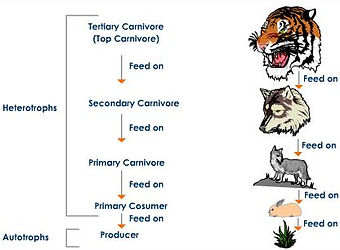
food web and Feeding Role

Because of strict hunting and conservation laws, White Tailed Deer habitats have seen an increase in it’s population, meaning the WTD is now a very common animal. If the population were to continue to grow rapidly, the environments they inhabit will have a decrease in plant material and vegetation. Because there is more White Tails, more food is needed and in the WTD’s case, their diet is made up of plant foods. This could affect the quantity and nutritional quality of their food, thus causing long term damage involving their body condition and this could also affect the appearance of buck antlers. The predators of the WTD will probably also see an increase in it’s population since there will be an abundance of prey for them.
If there was a decrease in the WTD population, overtime there would be a decrease in the their predators too. In the WTD’s case, their predators are the wolf and bear so since the WTD’s numbers go down, so does theirs. Based on this food web, there would probably also be a decrease in the rabbit population. The reason for that is there will be a need for more food other than deer for the bear and wolf. Lastly, there would be an increase in the plants and the food of the WTD. Because the WTD is a primary consumer, if their population goes down then obviously, there would be an increase in the autotrophs.
Feeding Role

White Tailed Deer are consumers, animals that do not produce their own food (like plants) but rather get food by eating other living things. In an energy pyramid, the WTD would be classified as the primary consumer and would also go under the heterotroph category. Heterotrophs are living organisms who get energy by eating other living organisms.